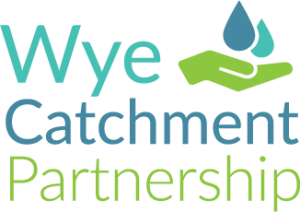Our two catchments are under a very considerable threat from at least three species of invading plant.
Rivers and streams are the ideal vector for carrying these plants and their seeds downstream. They can, however, invade upstream via a number of methods too. Our concern is for the loss of biodiversity that results from their establishment. Since these plants smother the native species that armour the river banks, they can also increase the risk of erosion.
The invading trio of species is:
Giving Up The Weed (GUTW) project
In November 2007, the Esmee Fairbairn Foundation granted funds to the Wye & Usk Foundation for an invasive weeds eradication project in the Wye and Usk catchments. The three year project was supported by the Environment Agency Wales, Countryside Council for Wales, Natural England and Keep Wales Tidy.
The grant was used to pay for:
- Plotting of all invasive weeds on a database as currently known and received from reports (years 1-3).
- Training five staff in the techniques of spraying (year 1).
- Eradicating Giant Hogweed in the Wye (Glasbury downstream for over 80km in the spring (Years 1-3).
- Eradicating all Himalayan Knotweed in both catchments (year 1).
- Eradicating all Japanese Knotweed starting from extremities of the Usk and Wye (years 1-3).
- Developing volunteer networks to manage Himalayan balsam.
- Investigating the legal position in respect of liability for spread.
- Study the effects of fencing out buffer strips and the effect on invasive weeds.
The Esmee Fairbairn Foundation grant of £94,000 over three years was added to by contributions from the Foundation, Environment Agency Wales, Countryside Council for Wales and Natural England to give a total budget of just under £150,000.
Results
The project enabled the development of a logistical system to manage the massive problem of Giant Hogweed and Japanese Knotweed in the Usk and Wye. In the first three years, over 125km of double bank was sprayed for Giant Hogweed (4,000+ plants), with 337 stands of Japanese knotweed, 3 stands of Himalayan knotweed and 1 stand of Lesser knotweed also sprayed.
The project also extended to mink and Signal crayfish trapping in areas of Wales where water voles may still be present and WUF also publicised the spread of other invasives such as the Killer Shrimp (Dikerogammerus villosus), which have been found in Cardiff Bay and a lake near Port Talbot.
2011 Onwards…
Since 2011, the invasive species eradication programme has continued with funding from Natural Resources Wales, Natural England, Beacons Trust and riparian owners.
Enemy number one – Giant hogweed – has almost been seen off although seeds can remain in the soil for more than eight years. Vigilance is therefore required to ensure any emerging seeds are dealt with before developing into seeding adult plants.
Japanese knotweed is reducing following our regular autumn spraying and we have found that spraying when the plant is in flower gives a much greater chance of eliminating it. Checking for regrowth is an important part of it – we rely on anglers, walkers and owners to keep us informed of any new stands. Please email louis@wyeuskfoundation.org to report any invasive weeds.
Thus far we have treated 3,336 stands of Giant hogweed covering over 455km river, 488 stands of Japanese knotweed, 4 of Himalayan knotweed and 4 of Lesser knotweed.
We are very grateful to the following organisations for their support in this project:
Natural England; Esmee Fairbairn Foundation; Environment Agency; Natural Resources Wales; Keep Wales Tidy; Dwr Cymru/Welsh Water; Celtic Manor Resort.



